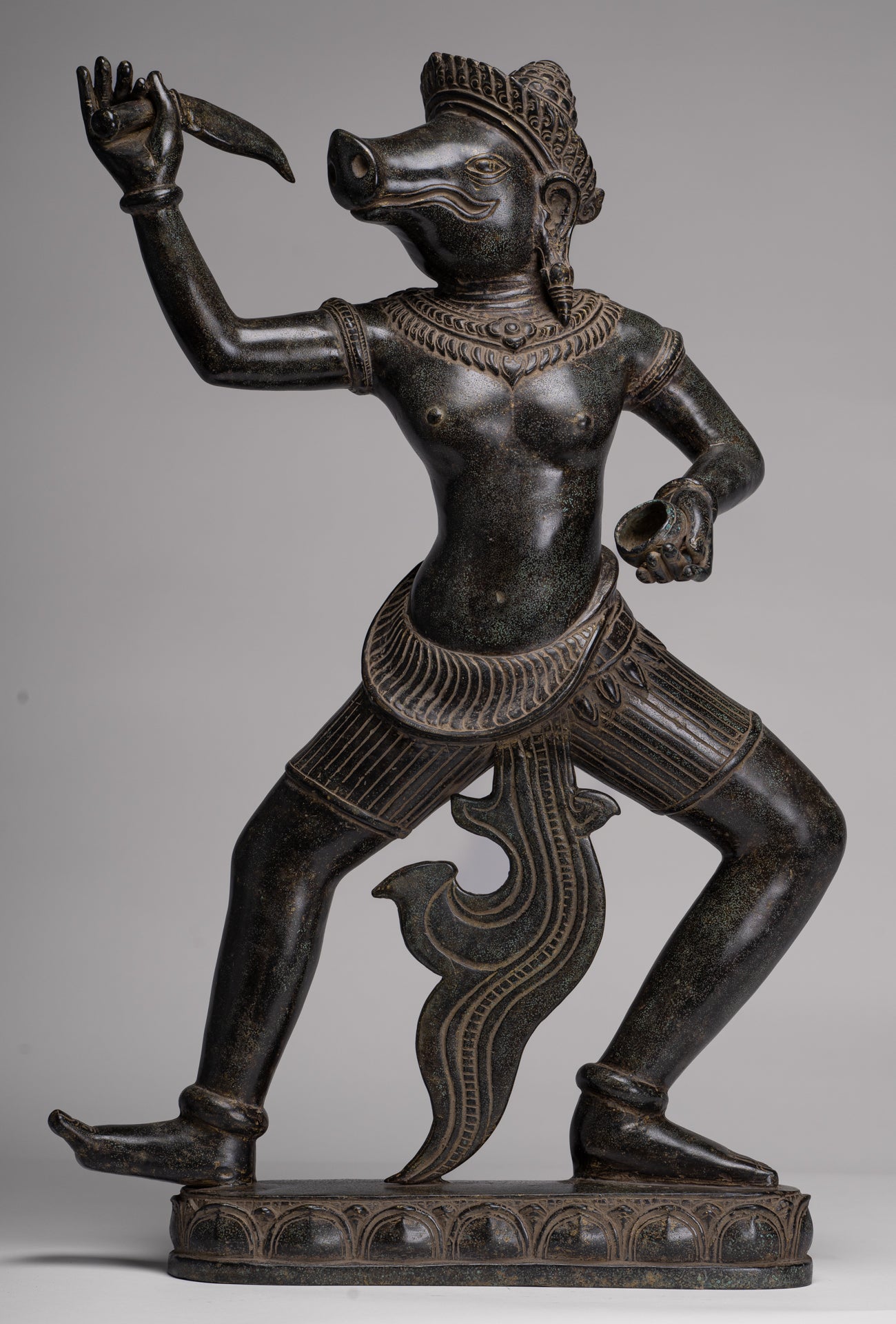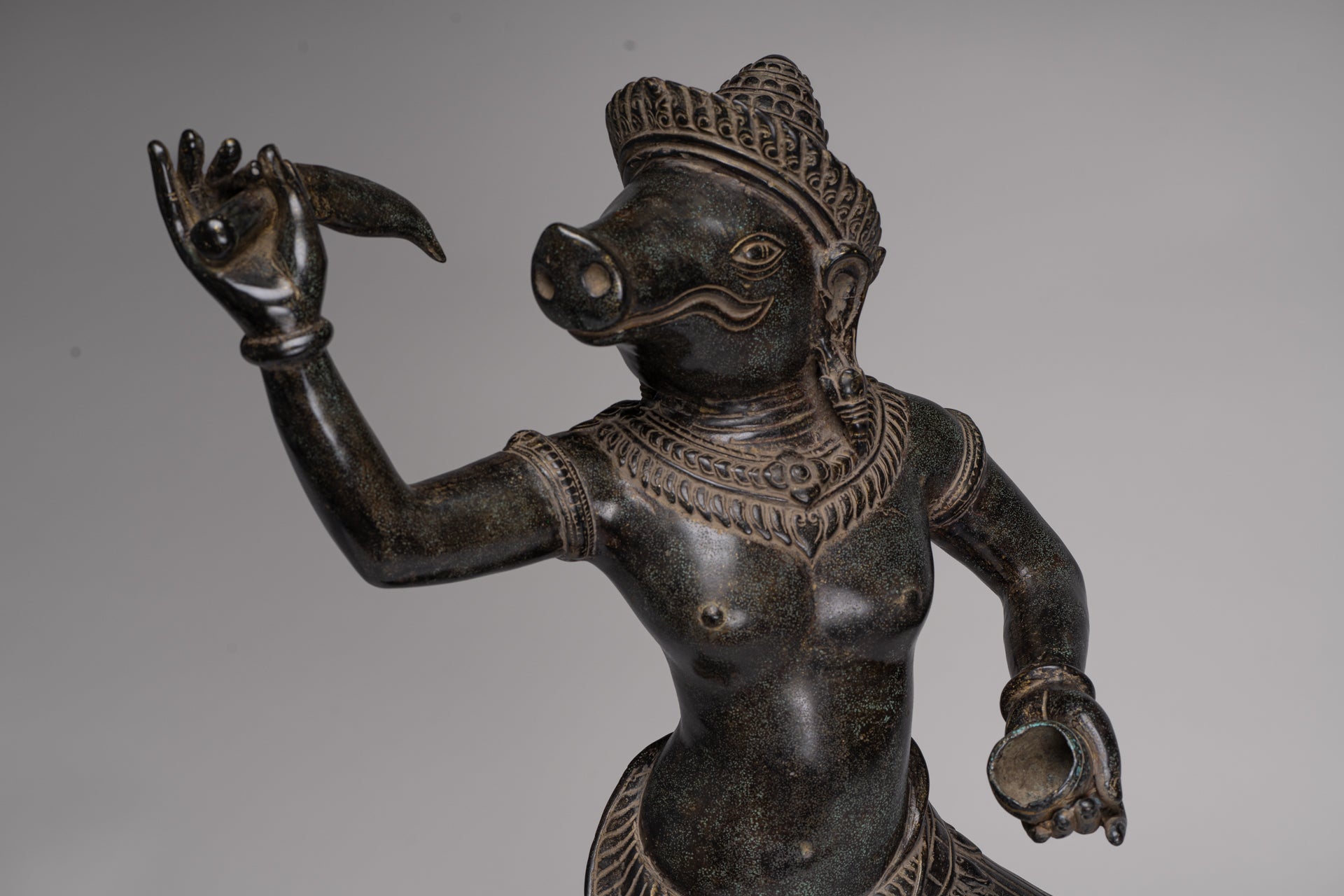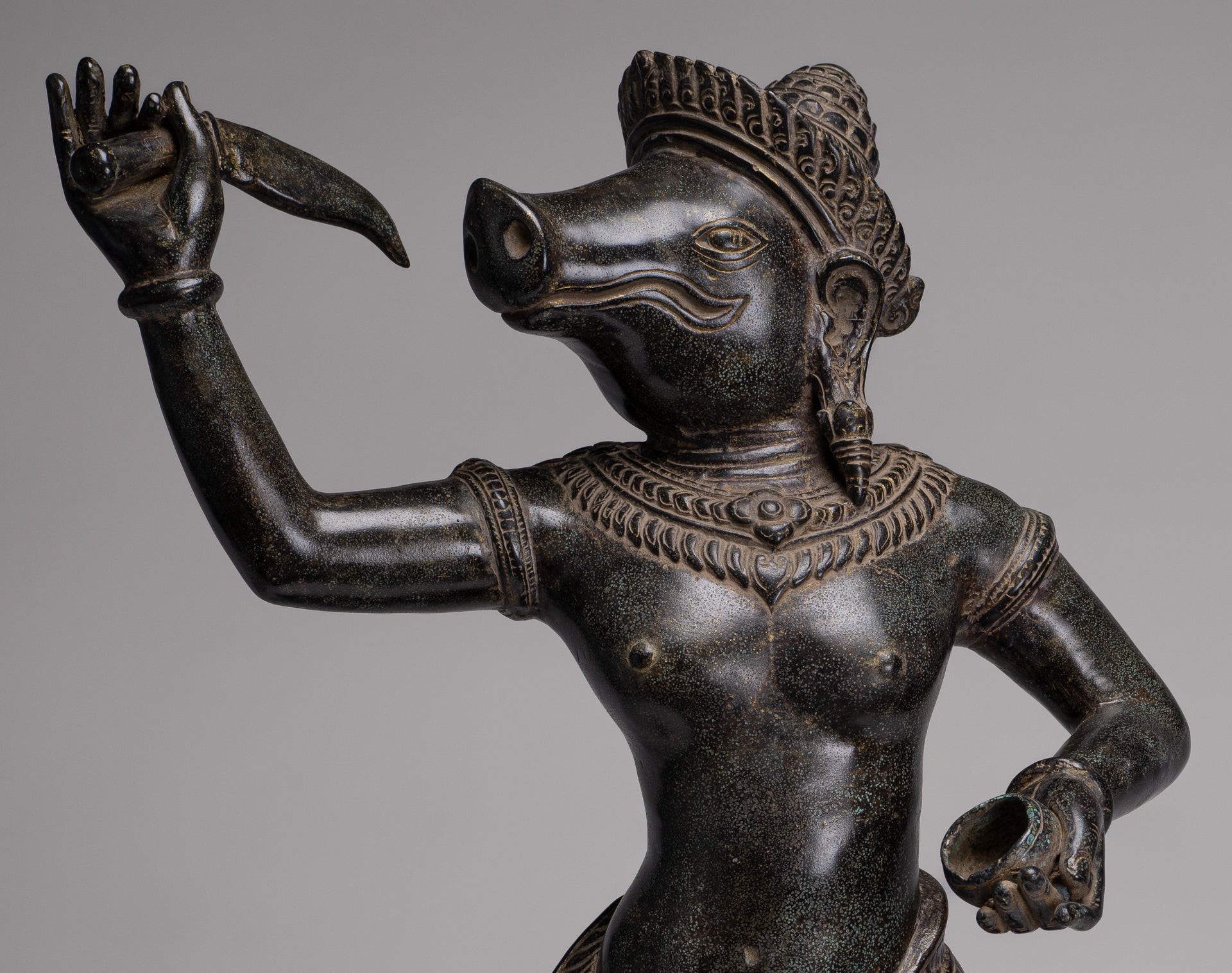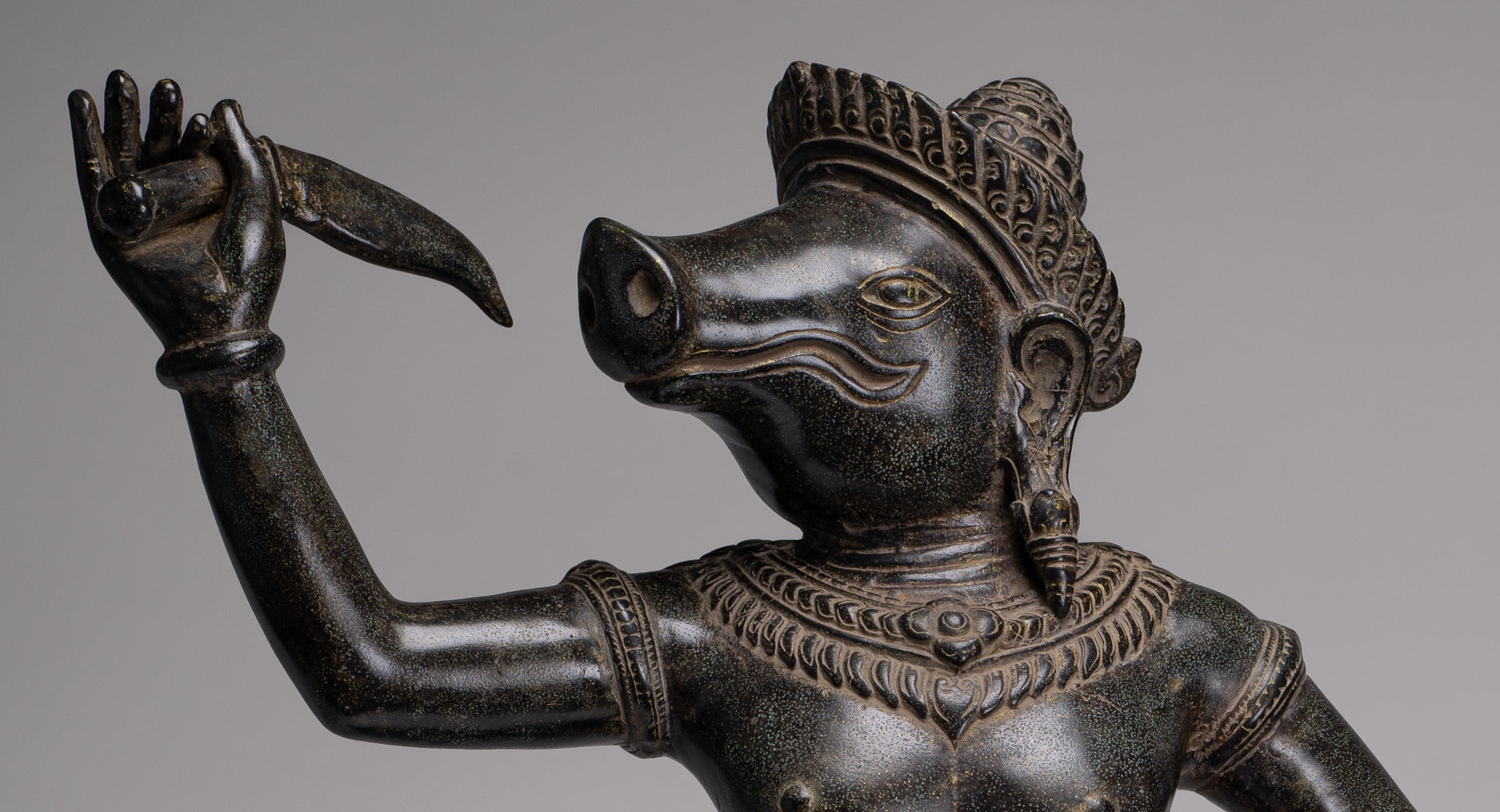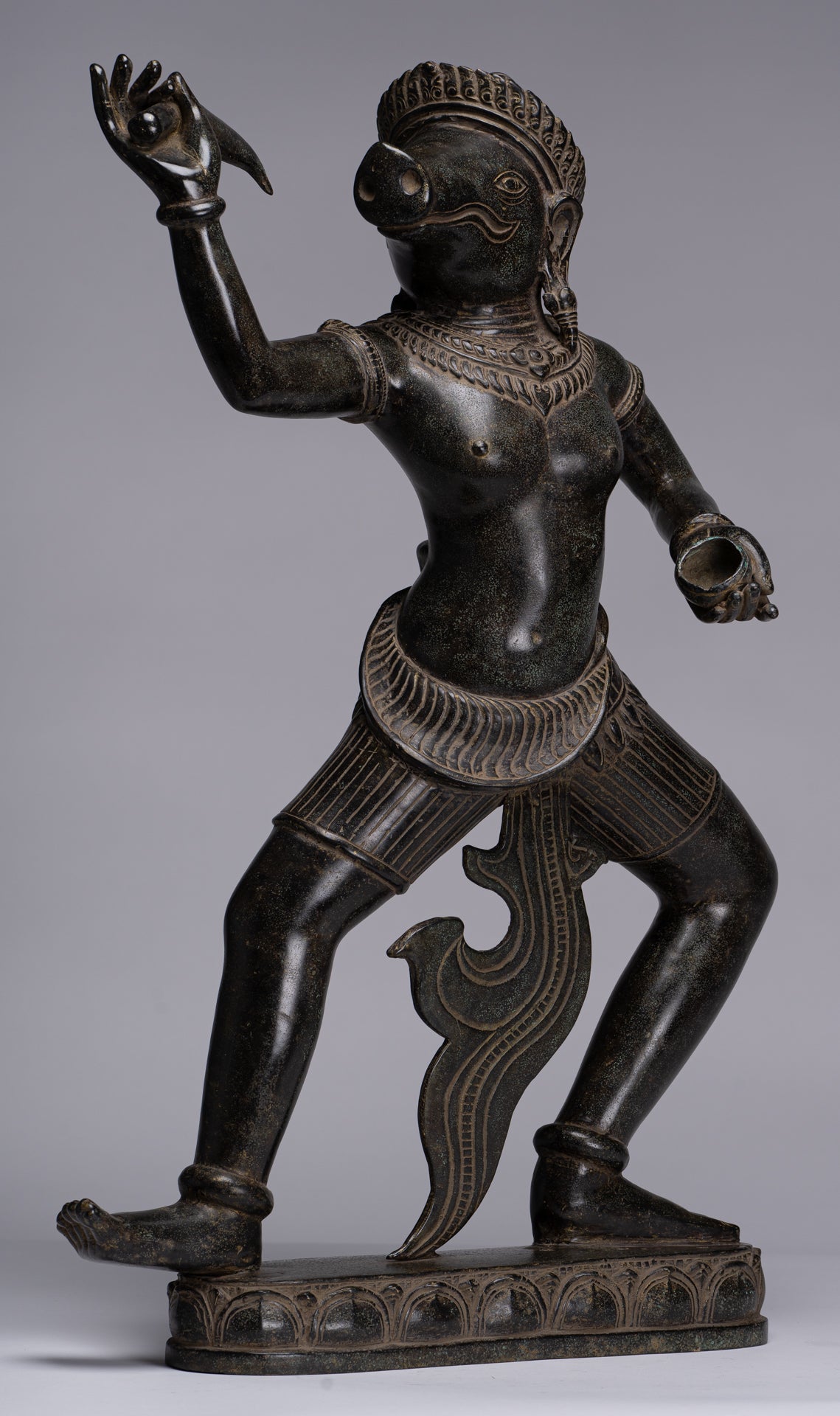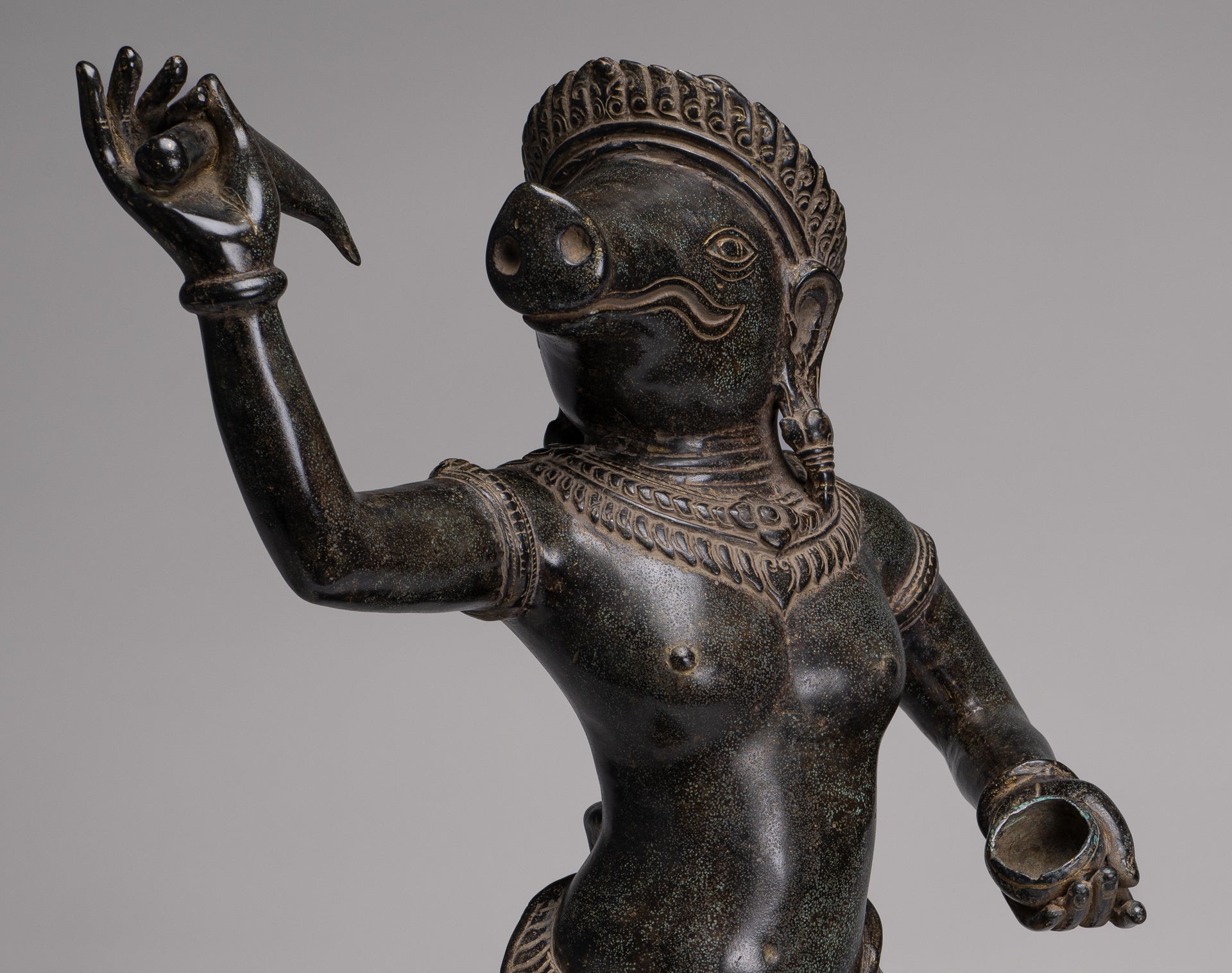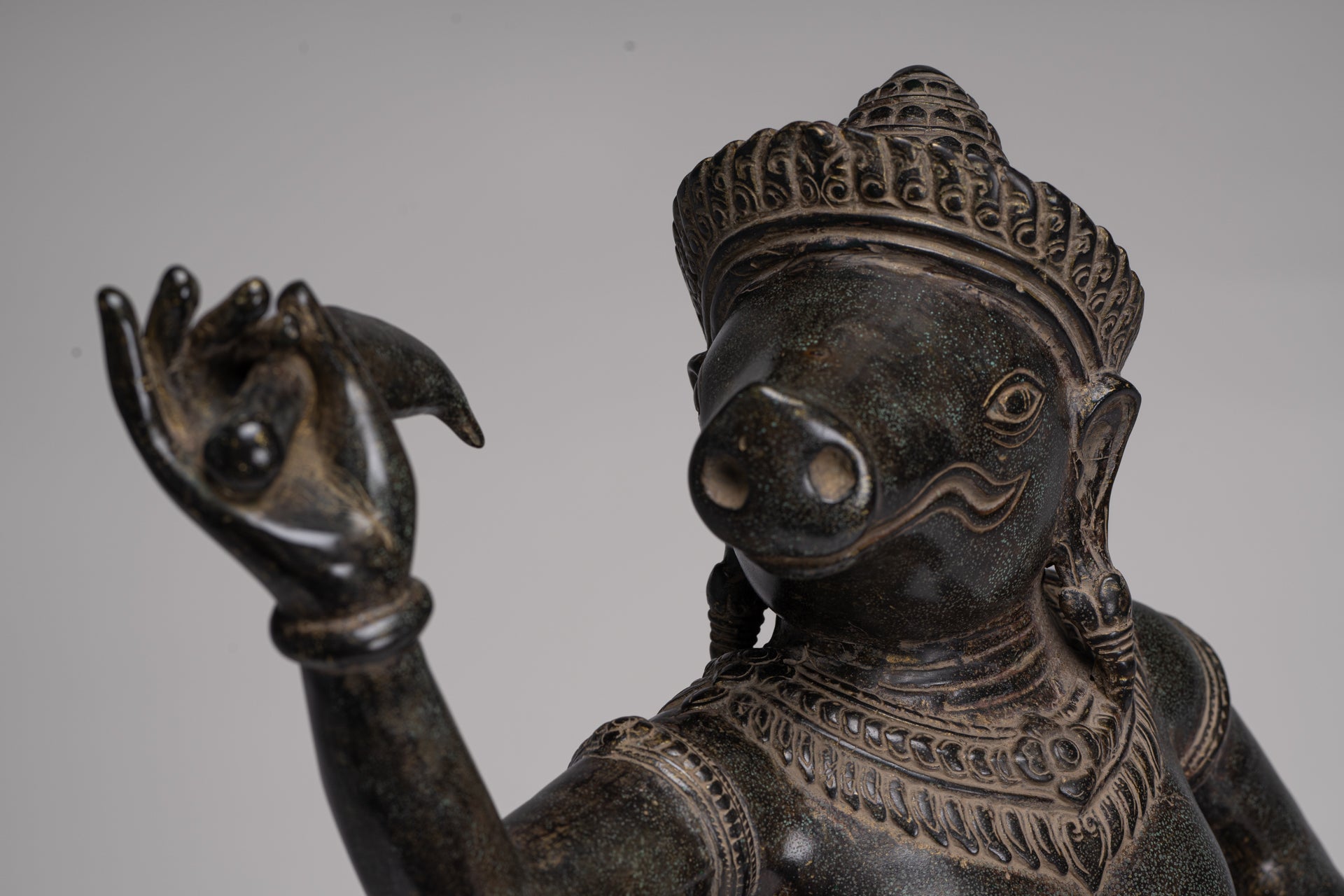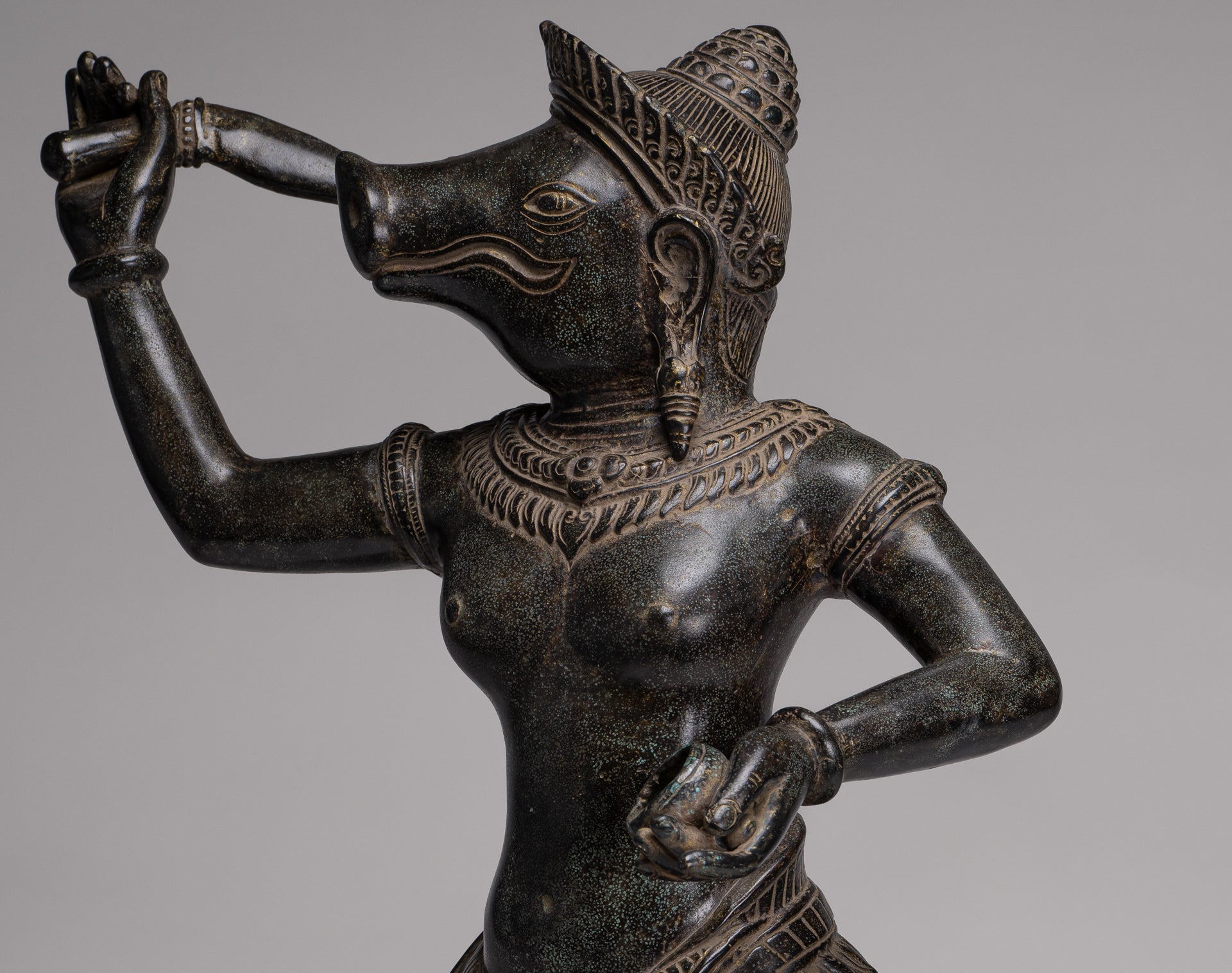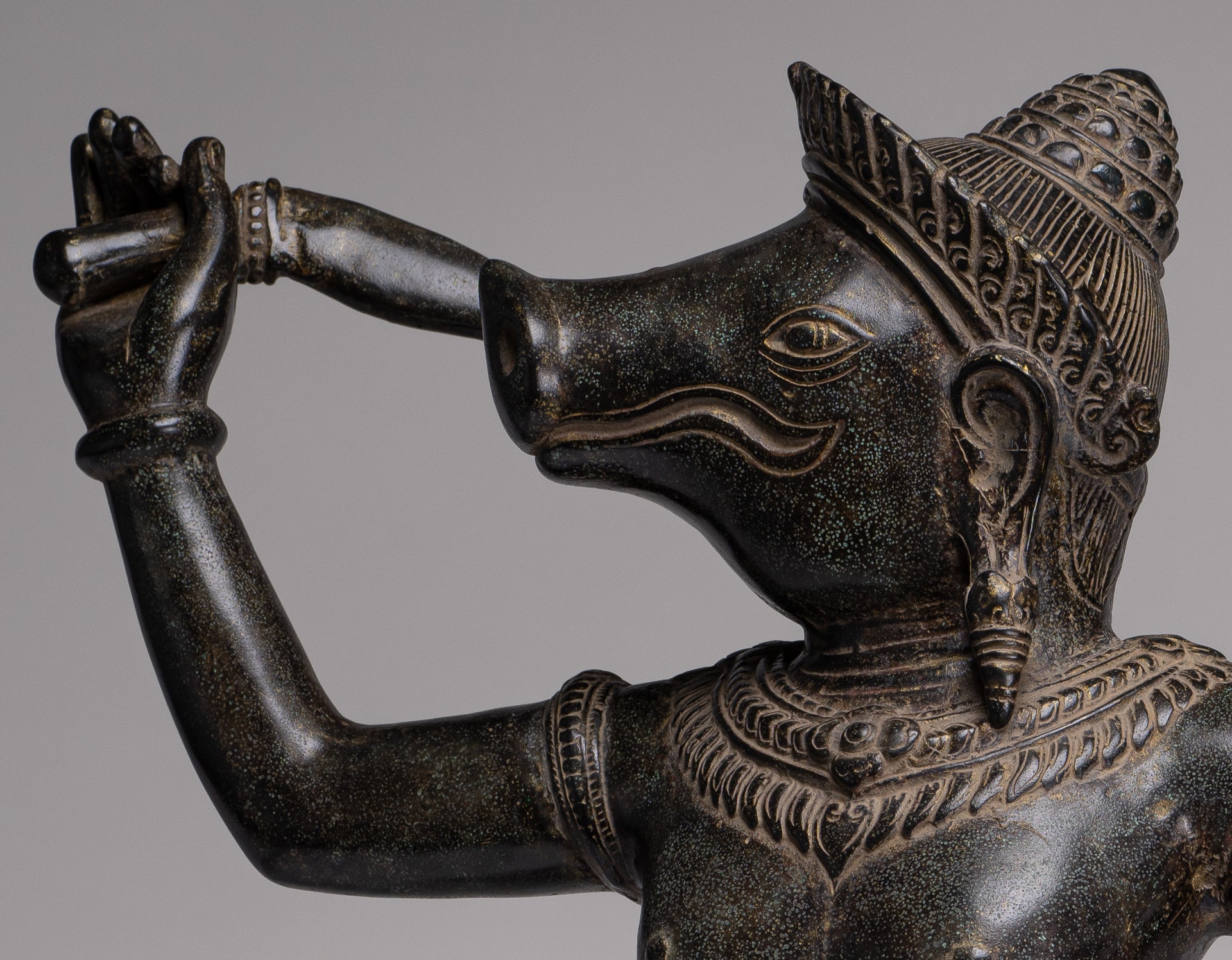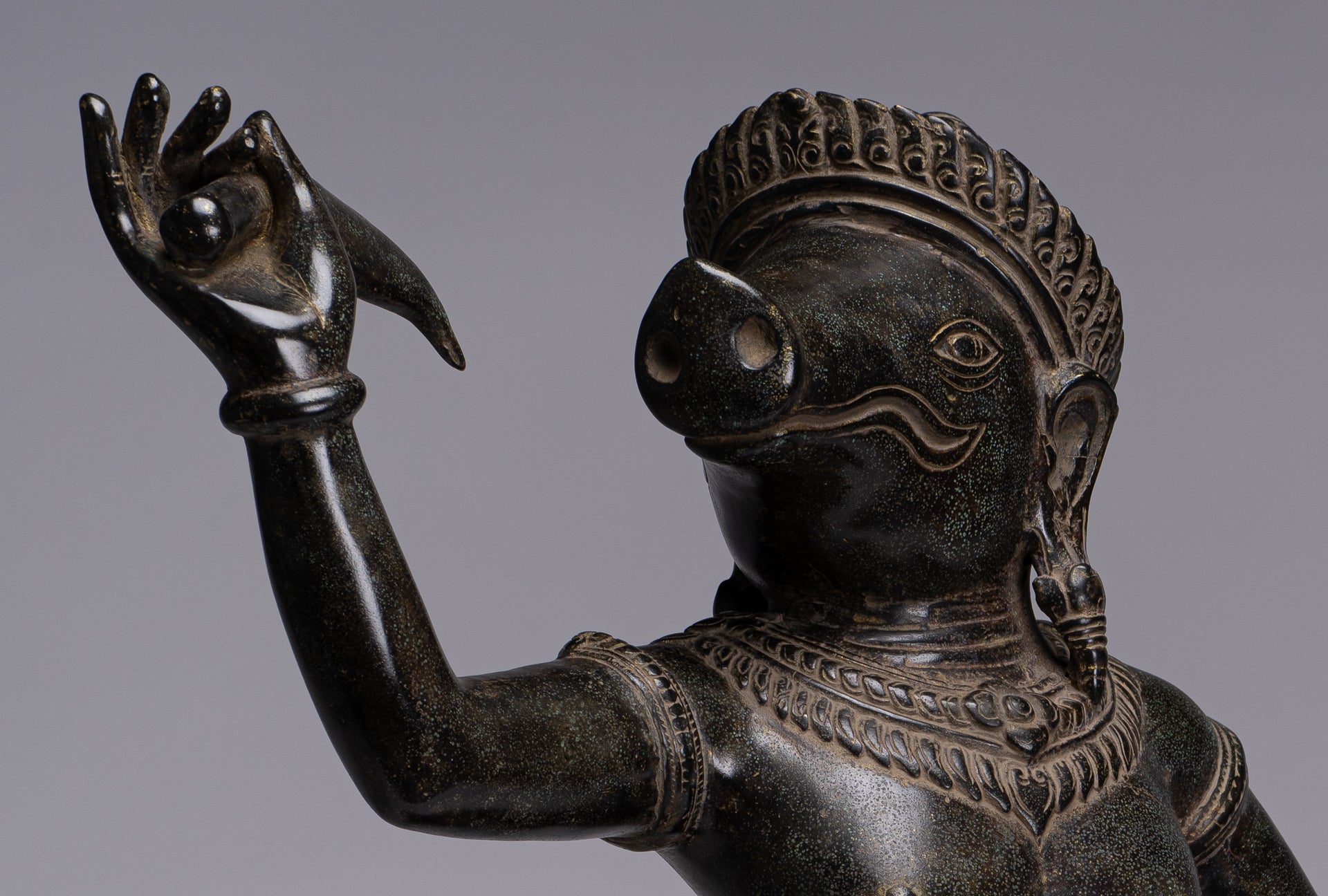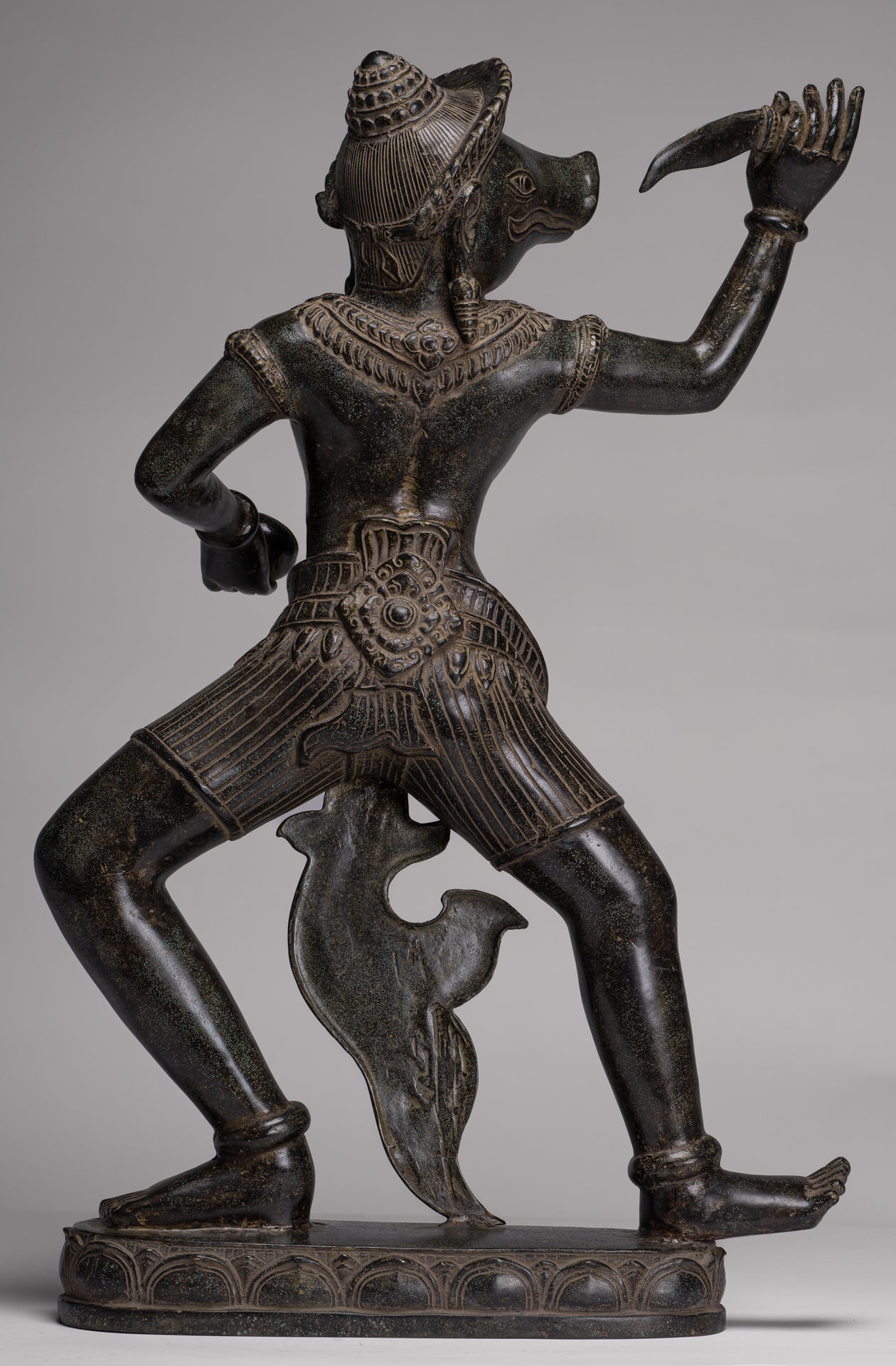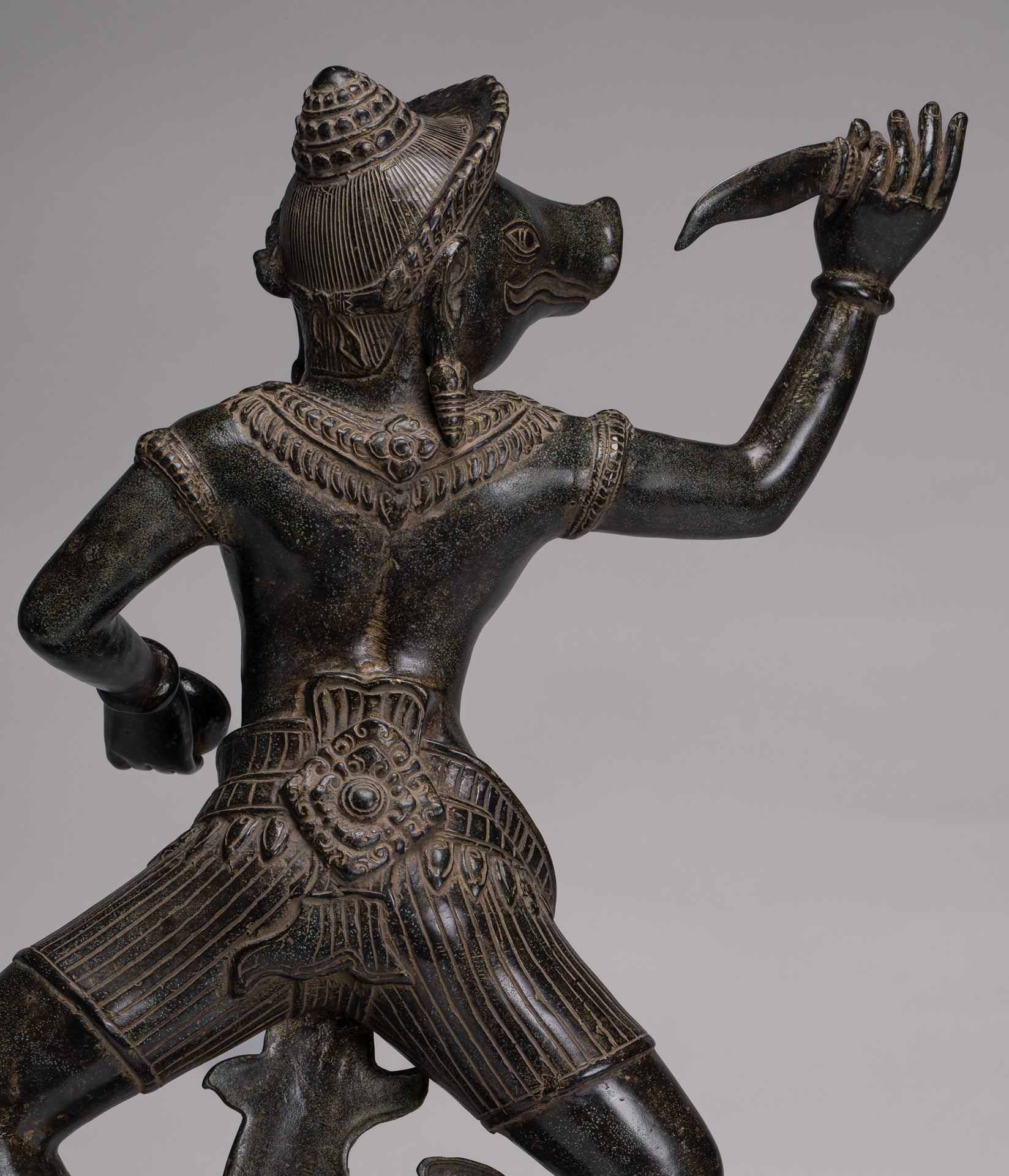-
Varaha Statue - Antique Khmer Style Standing Bronze Varaha Boar Avatar of Vishnu - 62cm/25"
Measurements - Height 62cm/25"
An antique Angkor Wat style Khmer bronze 2-arm sculpture of Varaha.
In the sacred realms of Hindu mythology, the tale of Varaha, the third avatar of Lord Vishnu, unfolds as a profound narrative illustrating the eternal struggle between order and chaos. As the cosmic boar, Varaha embodies the divine force that descends to restore balance, rescue the Earth, and vanquish the forces of darkness.
The Cosmic Peril
The narrative begins in a time of cosmic chaos, where the demon Hiranyaksha, fueled by his insatiable power-lust, submerges the Earth into the cosmic ocean. The world is thrown into disarray as the forces of disorder threaten to engulf creation. The gods, distressed by the unfolding events, turn to Lord Vishnu for salvation.
The Descent of Varaha
Hearing the prayers of the distressed deities, Lord Vishnu decides to intervene and restore cosmic order. In a divine manifestation, Vishnu assumes the form of Varaha, a colossal boar with a resplendent radiance that pierces the darkness. Varaha descends into the cosmic waters, determined to rescue the Earth and confront the demonic Hiranyaksha.
The Cosmic Battle
A fierce battle ensues between Varaha and Hiranyaksha. The demon, recognizing the divine nature of Varaha, challenges him with relentless vigor. The two adversaries clash in a cosmic duel that reverberates through the universe, embodying the eternal struggle between good and evil, order and chaos.
The Triumph of Dharma
In a climactic moment, Varaha, with his immense strength and divine prowess, vanquishes Hiranyaksha. With a powerful sweep of his tusks, Varaha lifts the Earth from the cosmic waters, restoring it to its rightful place in the cosmos. The triumph of Varaha symbolizes the victory of dharma (righteousness) over adharma (unrighteousness) and the re-establishment of cosmic balance.
Varaha's descent and triumphant battle symbolize the cosmic order that prevails over chaos. The narrative underscores the cyclical nature of creation, preservation, and dissolution, emphasizing the perpetual dance of cosmic forces.
Varaha's depiction is rich with symbolism. As a boar, he represents strength, resilience, and the primal power of nature. His tusks, which lift the Earth, signify protection and support. In many artistic representations, Varaha is depicted with human features, often combining the boar's head with a human body, symbolizing the divine intervention in the material world.
The addition of a sword to Varaha's imagery introduces another layer of symbolism, emphasizing themes of divine power, justice, and the destruction of evil.
-
Divine Authority and Protection: In Hindu iconography, the sword (khadga) is a common symbol of divine authority and protection. When Varaha holds a sword, it signifies his role as a guardian of the cosmos, wielding divine power to protect the universe from chaos and evil forces.
-
Justice and Righteousness: The sword is also a symbol of justice and righteousness (dharma). Varaha’s sword represents the enforcement of cosmic law and order. By holding the sword, Varaha embodies the principle that righteousness will ultimately prevail, and justice will be served.
-
Destruction of Evil: In Hindu mythology, the sword is often associated with the destruction of evil and ignorance. Varaha’s battle with Hiranyaksha, culminating in the demon's defeat, is a vivid illustration of this. The sword signifies Varaha’s ability to cut through ignorance and darkness, restoring balance and harmony.
-
Spiritual Awakening: On a metaphysical level, the sword can symbolize the sharpness of intellect and the power of spiritual awakening. In this context, Varaha’s sword represents the cutting away of illusions and the awakening of higher consciousness.
The depiction of Varaha holding a sword is a potent symbol in Hindu art and mythology, rich with layers of meaning and significance. It captures the essence of Varaha’s divine mission to restore cosmic order, embodying themes of protection, justice, and the triumph of good over evil.
Through this powerful imagery, Varaha continues to inspire and guide devotees, offering profound spiritual and moral lessons that resonate across time and culture.
In the ever-evolving landscape of religious and artistic expression, the image of Varaha with a sword remains a timeless icon, reminding us of the enduring power of righteousness, the necessity of divine intervention, and the relentless pursuit of truth and enlightenment.
The intricate detail, sable patina and design of this unusual piece are particularly appealing.
SATISFACTION GUARANTEE - We have been offering SE Asian Art for many years and are proud of the reputation we have developed for fair and honest listings. However, if for any reason, whatsoever, you are unhappy with your purchase please just let us know and we will provide a full refund. We want you to be 100% happy with your purchase.
-
-
The majority of orders will be shipped with DHL. This is a secure, express and fully tracked service.
Items less than 2Kg we typically ship using Royal Mail.
Once we receive your order we try to ship all orders the same or next working day.
Large and/or fragile pieces requiring palletising, specialist crating and/or extra packaging may take a little longer. Palletised shipments will be delivered curbside.
All orders over 35 GBP will be shipped free of charge.

-
We genuinely hope that all purchases delight.
However, if they do not, regardless of reason, we will refund all orders upon receipt of the unwanted item. Just notify us within 14 days of receiving your order that you wish to make a return and send the piece back to us with 30 days of delivery.
Gandhara Buddha statues mark a turning point in Buddhist art, where the Buddha was first shown in fully human form with a striking blend of Indian and Greco‑Roman aesthetics.
They are essential for understanding how Buddhism spread along the Silk Road and how visual culture translated spiritual ideas into a universal, approachable image.


